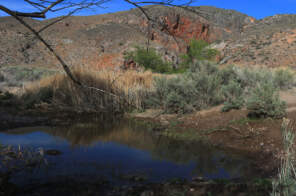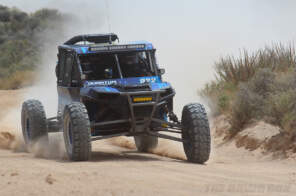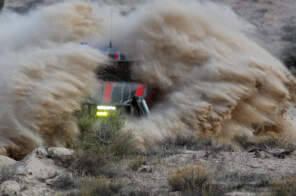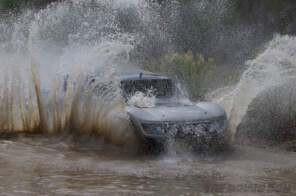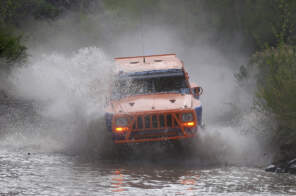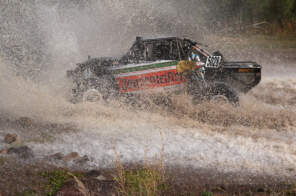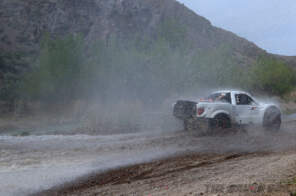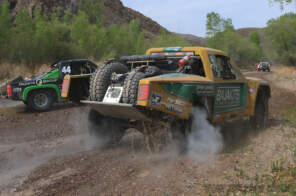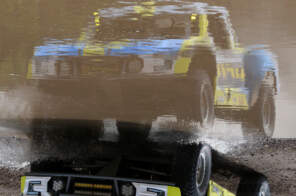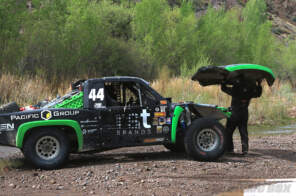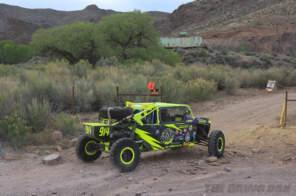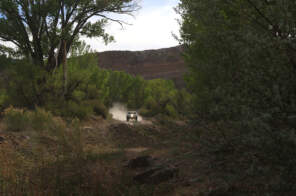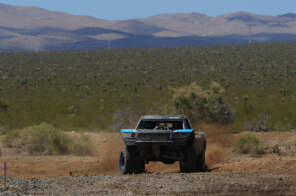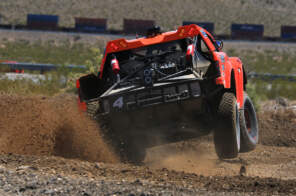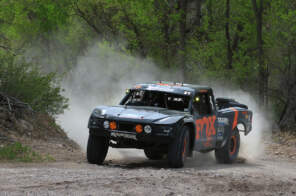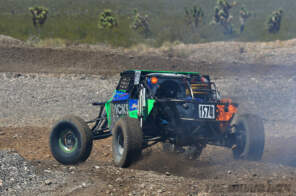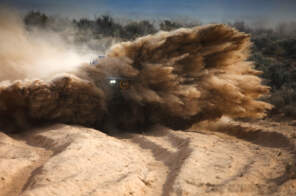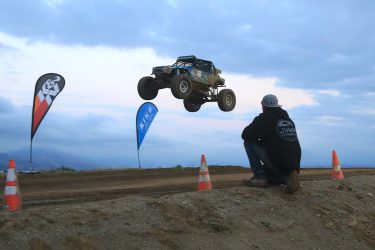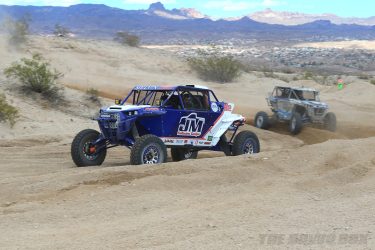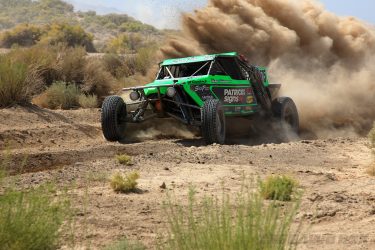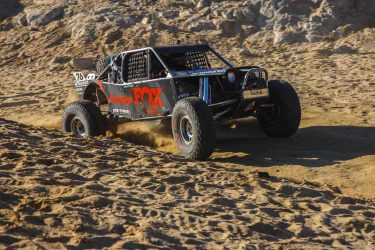2018 Silver State 300
Desert racing is filled with highly competitive racers, but is also known for the brutal terrain that has to be overcome. No matter where the race is held, you can almost count on there being a mix of sand, rocks, and silt. The course may climb mountains, drop into dry river washes, or skirt rock outcroppings, but the scenery remains fairly consistent. The Best in the Desert Series, Silver State 300 race breaks the mold. There are miles of featureless dry lake beds, and valleys filled with endless sage brush like other races, but the area around Caliente, Nevada where the race is held also contains tight, twisty trails through Juniper forests, water crossings, and green canyons filled with cottonwood trees.
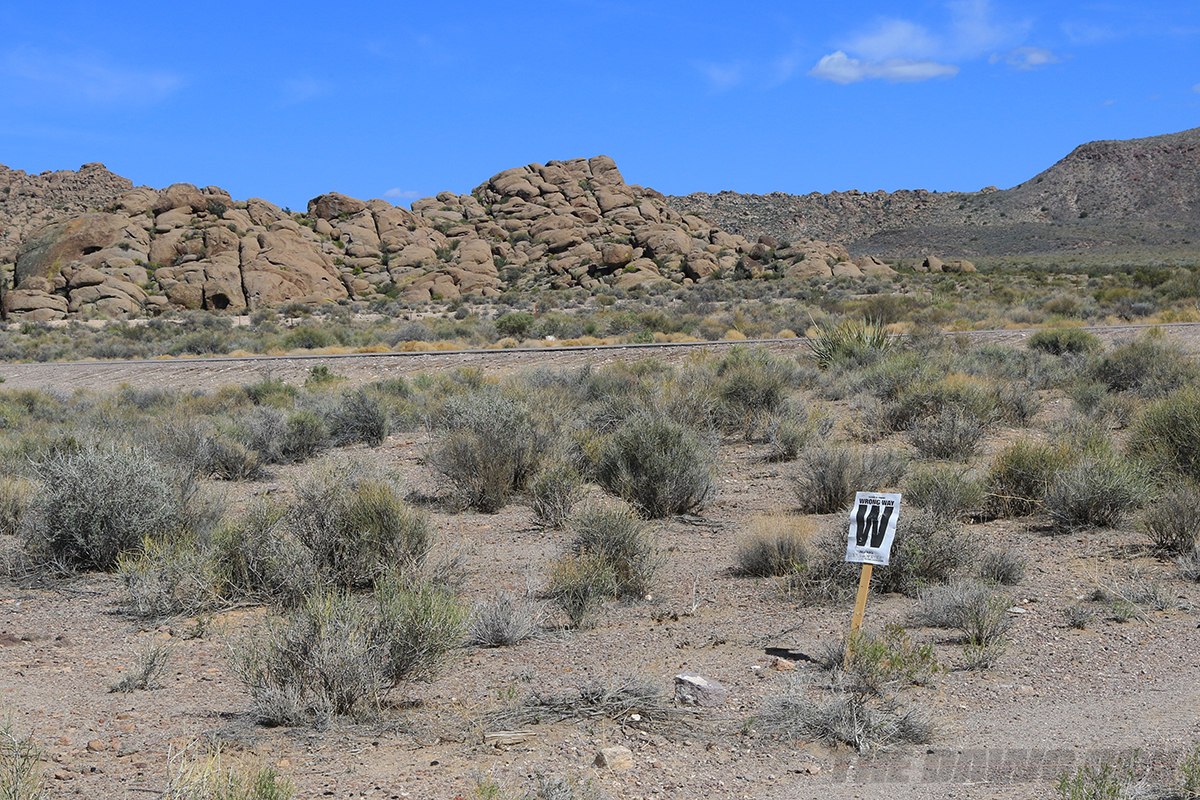
The race starts outside the small town of Alamo in a typical high desert valley filled with sage brush and grazing cattle. The roads there are fast as they were designed to get ranchers from one place to another in the least amount of time. The terrain starts to change around mile 23 as the brush disappears; dirt and rocks dominate the landscape. At mile 30, they have skirted several mountains and cross their first dry lake bed. At only mile 45 they turn east into a canyon that leads into a mountainous area. The map looks like a squiggly line as the course twists and turns following the terrain as it clings to the sides of the hills. Much of the course was laid out by nature. Flowing water has carved out paths through the steep rocky hill sides for centuries. The dry river beds are the only evidence that remains, and provides natural pathways for travel. It’s not easy going as river bottoms can hide deep pockets of sand that put huge loads on engines, transmissions, and drivelines. Large, wheel crushing rocks lurk just below the surface. The course gets very tight and technical as it descends into the town of Caliente and pit 3; only a third of the way to their goal.
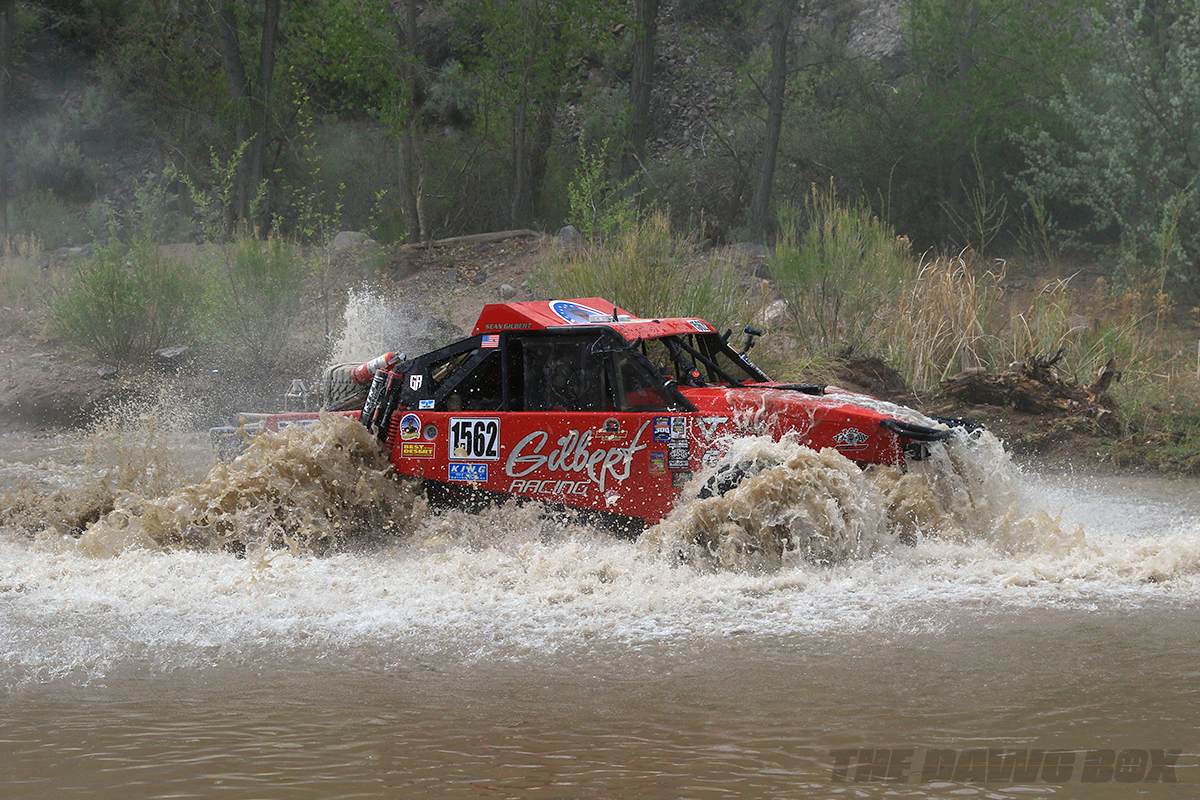
With considerable challenges already overcome, the course then heads towards the water crossing. It looks deceptively shallow and not much of an obstacle, but it is much deeper than it looks. Desert racing vehicles are designed to keep dust and dirt out of their engines, not water. If you hit the water crossing too fast, and your intake is not shielded, the strong vacuum created by the engine will suck the water into the engine like a 5 year old getting the last drops of a milkshake in the bottom of the cup. Once the water gets into the cylinders, the engine locks up and stalls. In extreme cases the hydraulic pressure can kick a rod out the side of the block. The water can also wreak havoc with the electronics or other mechanical parts. When the water hits hot metal, it turns to steam that can invade areas that are normally protected by seals. The thermal shock can also have an impact. Some were stopped in their tracks by the water; others suffered hidden damage that would show up much later in the race.
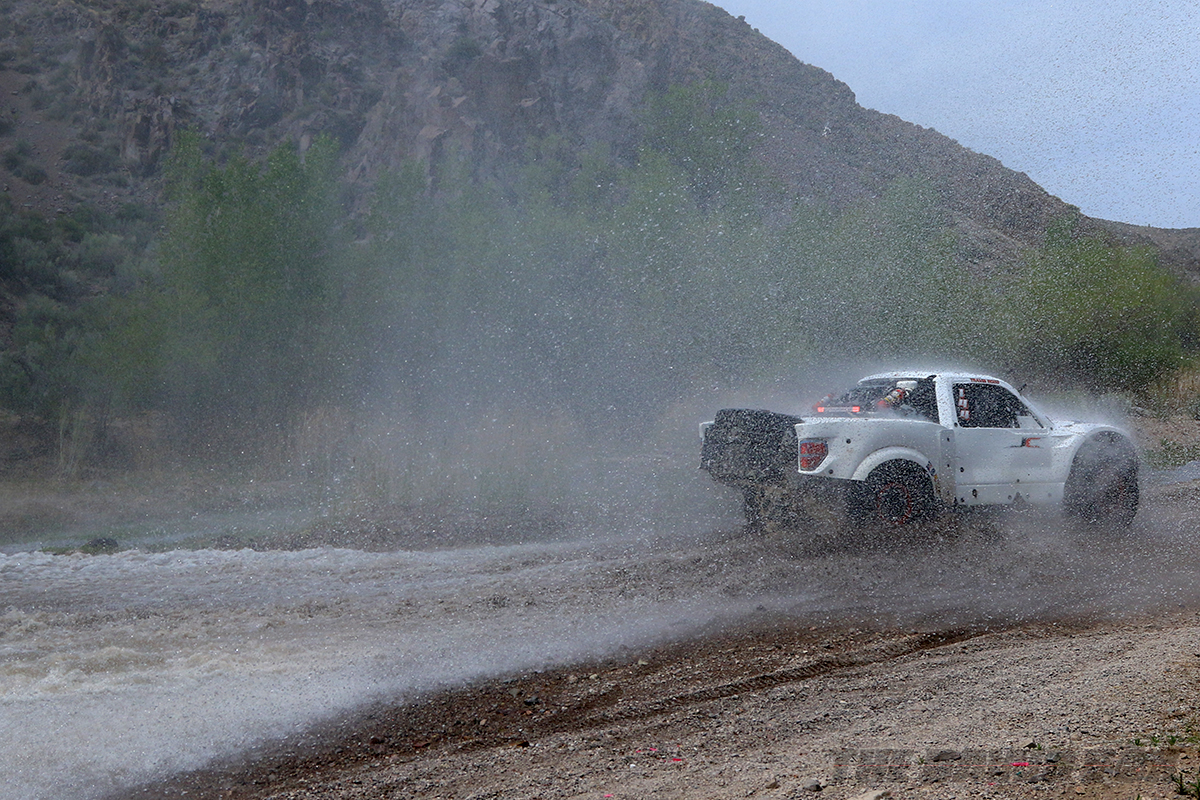
Hopefully the water dried out quickly because the course would turn to silt as it made its way north to Panaca. Silt is very fine particles of sand or dirt that has the consistency of talcum powder. The tiny particles are carried by the wind or water and deposited in the billions. A silt bed can be 10 feet across, or go on for a mile. It can stop a moving vehicle in its tracks and require a lot of digging, or a tug from a rope to get un-stuck. The best way to get through is to bury the throttle and maintain your momentum. Getting stuck strikes fear into any driver. Not only will you have some serious work to get out, but the silt that gets kicked up by each vehicle hangs in the air like a cloud and blinds oncoming drivers. The only safe thing to do is wait until the air clears before getting out of the vehicle, and head for high ground when another vehicle is approaching. The silt gets into everything, just like water, and can stall an engine if it clogs up the air filters. If you get through the silt, a second water crossing waits only a few miles away. Those drivers who have made it this far are only half way through the race.
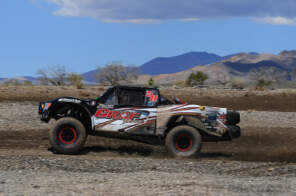
A long standing saying in offroad racing is that “in order to finish first, you first need to finish.” Just completing the course is a major accomplishment, but there is also the specter of the competition. Desert racers are just as tough as the terrain, and will suffer through incredible hardships in order to win. The race is not over until the very end. Defending Trick Truck Champion Jason Voss was the number one qualifier in time trials giving him the first shot at the course. He typically checks out from the field when he gets out front and had a big lead at the halfway point of the race. He suffered suspension parts failure soon after that point and lost several hours of downtime making repairs. He made it to the finish in 13th place. Justin Lofton was in the mix until he lost a motor. When it came down to the final miles, Justin Matney battled with Justin “Bean” Smith driving Tracy Graff‘s Trick Truck. Matney came out with the overall win by 6 minutes after racing flat out for over 5 hours. The Silver State 300 showed that no matter how fierce the competition, or how many hours are spent in preparation, the desert still provides the greatest challenge to offroad racers.
